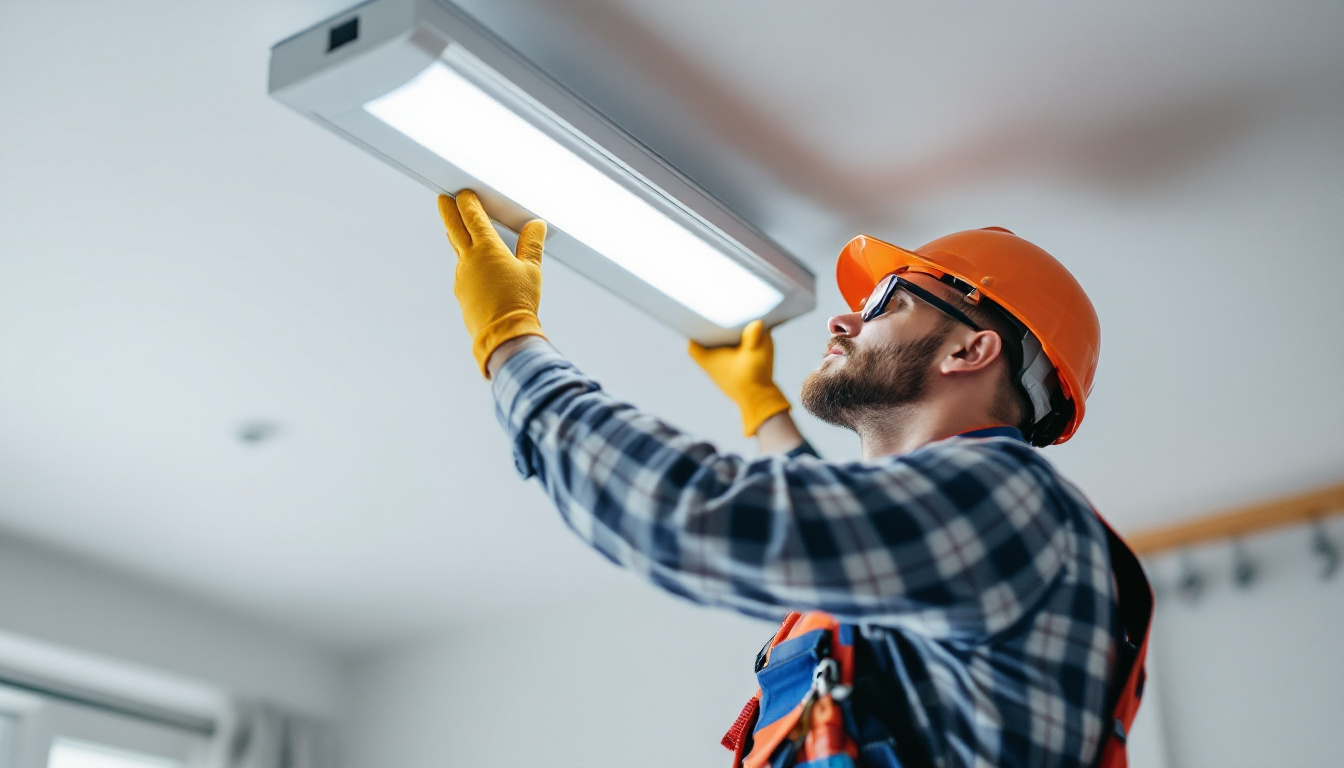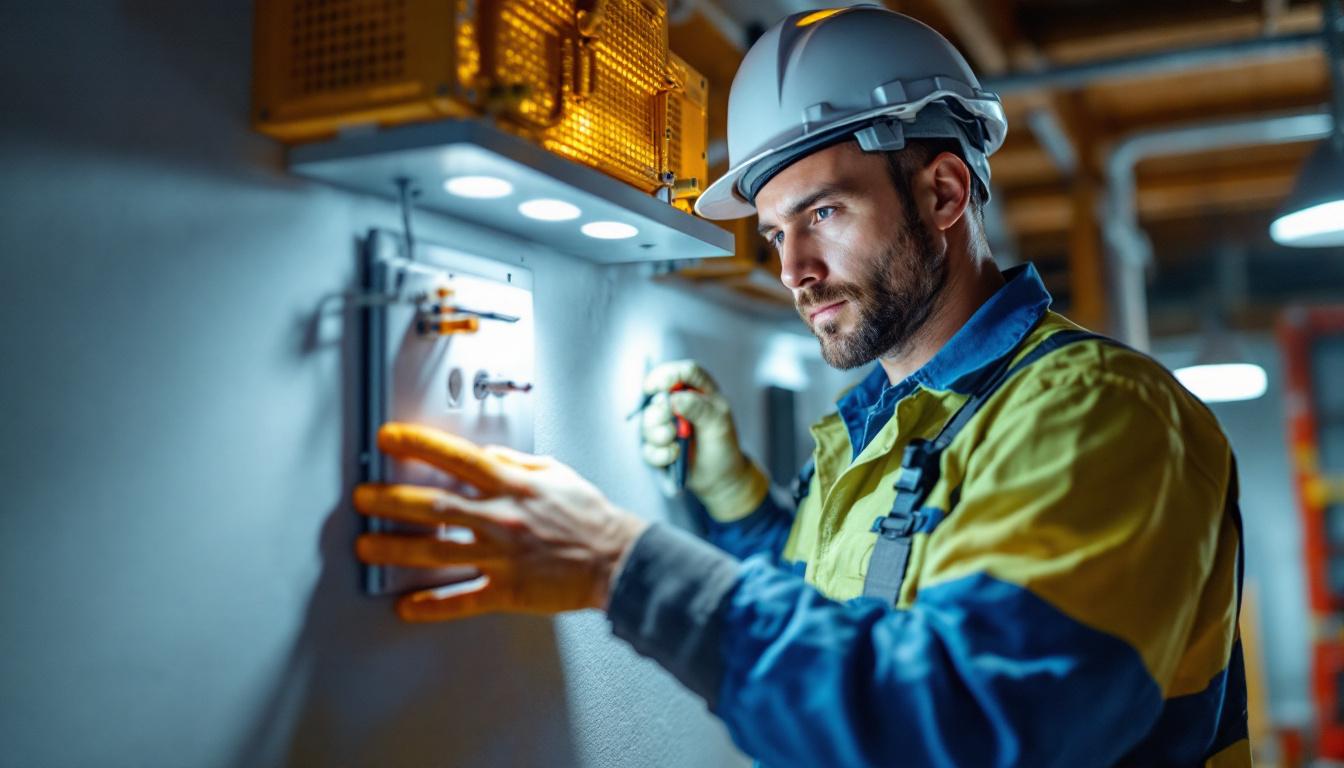
As a lighting contractor, understanding the nuances of removing fluorescent light fixtures is essential for providing quality service to clients. Fluorescent lighting is commonly used in various settings, from commercial spaces to residential homes. However, the process of removing these fixtures can be complex and requires a good grasp of safety protocols, tools, and techniques. This article aims to equip contractors with the knowledge needed to meet client expectations effectively.
Before diving into the removal process, it’s crucial to understand the components and functionality of fluorescent light fixtures. These fixtures typically consist of a ballast, tubes, and a housing unit. The ballast regulates the current to the tubes, which produce light when an electric current passes through them. Familiarity with these components will help contractors address potential issues during removal. The tubes themselves come in various lengths and color temperatures, which can significantly affect the ambiance of a space. For instance, cooler color temperatures can enhance focus in work environments, while warmer tones are often preferred in residential settings for a cozier feel.
Fluorescent fixtures come in various types, including surface-mounted, recessed, and pendant styles. Each type has its unique installation method and removal process. Surface-mounted fixtures are attached directly to the ceiling, while recessed fixtures are set into the ceiling, requiring a different approach for removal. pendant fixtures hang from the ceiling and may involve additional considerations regarding the suspension system. Understanding these differences is vital for a seamless removal process. Additionally, some fixtures are designed for specific applications, such as high-bay lights for warehouses or low-profile fixtures for areas with limited ceiling space. Knowing the intended use of each fixture can aid in selecting suitable replacements or upgrades.
Safety should always be the top priority when working with electrical fixtures. Before starting the removal process, contractors must ensure that the power supply is turned off at the circuit breaker. This step prevents electrical shocks and ensures a safe working environment. Additionally, wearing appropriate personal protective equipment (PPE) such as gloves and safety goggles is essential to protect against potential hazards. It’s also wise to have a first aid kit on hand and to familiarize oneself with the location of emergency exits in case of unforeseen incidents. Furthermore, proper disposal of fluorescent tubes is critical, as they contain small amounts of mercury, which can be harmful to the environment. Many localities offer recycling programs specifically for fluorescent bulbs, ensuring that they are disposed of safely and responsibly.
Having the right tools on hand can significantly streamline the process of removing fluorescent light fixtures. The following tools are commonly required:
Each tool serves a specific purpose, from testing for electrical current to securing and disconnecting wires. Ensuring that all tools are readily available before beginning the removal process can save time and prevent unnecessary delays. Additionally, having a well-organized workspace can enhance efficiency, allowing for a smoother workflow as you navigate the various steps involved in the removal process. Consider using a tool belt or a portable toolbox to keep everything within reach, minimizing the need to constantly climb up and down a ladder or search for misplaced items.
A voltage tester is an essential tool for confirming that the power is off before starting any work. It allows contractors to check the wires for any residual current, ensuring a safe environment. Always test multiple points to confirm that the electrical supply is completely disconnected. This step is crucial in preventing accidents and ensuring the safety of both the contractor and the clients. In addition to basic voltage testers, there are also non-contact voltage testers available, which can detect electrical current without making direct contact with wires. This feature can be particularly useful in tight spaces or when working with fixtures that are difficult to access.
Furthermore, understanding how to properly use a voltage tester is key to maximizing its effectiveness. Familiarize yourself with the tester’s indicators—whether they emit a sound, light up, or both—so you can quickly assess the presence of voltage. It’s also advisable to perform a functionality test on the voltage tester itself before use, by checking it on a known live circuit. This practice not only ensures that the tool is working correctly but also reinforces the importance of safety in electrical work. By taking these precautions, you can approach the task of removing fluorescent light fixtures with confidence and peace of mind.
Now that the necessary tools and safety precautions are in place, it’s time to delve into the step-by-step process of removing fluorescent light fixtures. This guide provides a systematic approach to ensure efficiency and safety.
The first and foremost step is to turn off the power supply at the circuit breaker. Once the power is off, use a voltage tester to confirm that there is no electrical current flowing to the fixture. This precaution is vital to prevent electrical shocks during the removal process.
With the power confirmed off, the next step is to remove the fluorescent tubes. Depending on the fixture design, gently twist or pull the bulbs out of their sockets. It’s advisable to handle the bulbs with care, as they can be fragile and may break easily. If any bulbs are broken, ensure to clean up the shards safely to avoid injury.
After removing the bulbs, the next step involves detaching the fixture from the ceiling. This typically requires unscrewing the fixture from its mounting bracket. Depending on the fixture type, there may be screws or clips holding it in place. Use the appropriate screwdriver to remove these fasteners and carefully lower the fixture from the ceiling.
Once the fixture is free from the ceiling, the next crucial step is to disconnect the wiring. This process involves several sub-steps that must be executed with precision.
Before proceeding, it’s essential to identify the different wires connected to the fixture. Typically, there will be a hot wire (usually black), a neutral wire (usually white), and a ground wire (usually green or bare copper). Understanding these connections is critical for safe disconnection.
Using wire cutters or strippers, carefully disconnect the wires. If the wires are connected with wire nuts, unscrew them gently to separate the connections. It’s important to keep track of which wire connects to which, as this knowledge will be beneficial if the fixture is to be replaced later. For added safety, it may be helpful to wrap the ends of the disconnected wires with electrical tape to prevent accidental contact.
After successfully removing the fluorescent light fixture, proper disposal is the next consideration. Fluorescent bulbs contain small amounts of mercury, making them hazardous waste. Therefore, it is vital to follow local regulations regarding disposal.
Many communities offer recycling programs for fluorescent bulbs and fixtures. Contractors should be aware of these options and inform clients about the importance of recycling to minimize environmental impact. Providing clients with information on local recycling centers can enhance the contractor’s reputation as a responsible service provider.
In addition to the bulbs, the ballast also requires proper disposal. Depending on the type of ballast, it may contain hazardous materials. Contractors should check local regulations to determine the appropriate disposal methods for different types of ballasts, ensuring compliance with environmental standards.
While removing fluorescent light fixtures may seem straightforward, several challenges can arise during the process. Being prepared for these challenges can help contractors navigate them effectively.
Occasionally, fixtures may be stubborn and difficult to remove due to rust or corrosion. In such cases, using penetrating oil can help loosen the screws or fasteners. Allow the oil to sit for a few minutes before attempting to remove the fixture again. Patience is key, as forcing a stubborn fixture can lead to damage.
In the event of broken fluorescent bulbs, it is essential to handle the situation carefully. Use gloves to protect hands from sharp edges and a broom or vacuum to clean up the shards. Additionally, it may be necessary to inform clients about the proper cleanup process to ensure their safety.
Effective communication with clients is paramount throughout the removal process. Clients expect transparency and professionalism from their lighting contractors.
Before beginning the removal, contractors should provide clients with a realistic timeline for the project. Factors such as the type of fixture and potential challenges should be considered when estimating the time required. Keeping clients informed about any delays or issues that arise during the process can help build trust and satisfaction.
After the removal, contractors should take the opportunity to educate clients about maintenance for their new lighting fixtures. Offering tips on bulb replacement, cleaning, and energy efficiency can enhance the client’s experience and demonstrate expertise. This additional service can set contractors apart from competitors and foster long-term client relationships.
Removing fluorescent light fixtures is a task that requires skill, knowledge, and attention to detail. By understanding the components of fluorescent lighting, employing the right tools, and following a systematic removal process, contractors can meet client expectations effectively. Additionally, addressing common challenges and maintaining open communication fosters trust and satisfaction among clients. Ultimately, mastering the art of fluorescent fixture removal not only enhances a contractor’s skill set but also contributes to a positive client experience.
As the lighting industry continues to evolve, staying informed about best practices and safety protocols is essential for success. By prioritizing safety, efficiency, and client communication, lighting contractors can thrive in their field and build a reputation for excellence.
Ready to take on your next fluorescent fixture removal project with confidence? Ensure you’re equipped with the best tools for the job by choosing LumenWholesale. Our extensive selection of spec-grade lighting products is designed to meet the highest industry standards, providing you with reliable and high-performance lighting solutions. With unbeatable wholesale prices and the convenience of free shipping on bulk orders, you can stock up on all the lighting essentials without the worry of hidden fees or inflated markups. Elevate your service offerings and delight your clients with the quality, affordability, and convenience that LumenWholesale provides. Discover the value we bring to your projects by visiting our website and exploring our range of products. Wholesale Lighting at the Best Value is just a click away.

Discover why gang box covers are essential for lighting contractors in this insightful article.

Discover the essential guide for lighting contractors with the ultimate Can Light Conversion Kit checklist.

Discover the essential guide to 3 Watt puck lights tailored for lighting contractors.

Discover the transformative impact of hanging LED lights for lighting contractors.